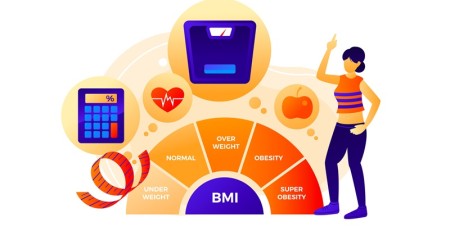Taking Strides Against Type 2 Diabetes
Type 2 diabetes (T2D) remains a significant public health challenge worldwide, with its prevalence steadily rising. However, emerging research suggests that a simple and accessible activity fast-paced walking may hold the key to preventing and managing this chronic condition.
The Power of Fast-Paced Walking
A recent study published in the British Medical Journal (BMJ) found compelling evidence linking regular fast-paced walking to a reduced risk of developing T2D. The study, which analyzed data from over 100,000 individuals, revealed that those who engaged in brisk walking for at least 30 minutes a day experienced a 30% lower risk of developing T2D compared to their sedentary counterparts (BMJ, 2023).
This finding underscores the importance of incorporating moderate-intensity physical activity, such as brisk walking, into daily routines to combat the onset of T2D. Unlike strenuous exercise regimens, fast-paced walking is convenient, low-impact, and achievable for individuals of all fitness levels, making it an ideal option for diabetes prevention and management.
Mechanisms Behind the Benefits
The benefits of fast-paced walking in curbing T2D can be attributed to its positive effects on insulin sensitivity, glucose metabolism, and overall cardiovascular health. When we walk briskly, our muscles utilize glucose more efficiently, thereby lowering blood sugar levels and reducing insulin resistance—a hallmark feature of T2D (American Diabetes Association, 2022).
Moreover, regular physical activity, such as fast-paced walking, enhances cardiovascular fitness, lowers blood pressure, and improves lipid profiles, all of which contribute to a reduced risk of T2D and its complications (Mayo Clinic, 2022).
Practical Recommendations For Those With Diabetes
Incorporating fast-paced walking into daily routines doesn’t require expensive gym memberships or specialized equipment. Here are some practical tips to get started:
- Start Slowly: Begin with shorter durations and gradually increase your walking pace and duration as your fitness improves.
- Set Realistic Goals: Aim for at least 150 minutes of moderate-intensity aerobic activity, such as brisk walking, per week, as recommended by the American Heart Association (AHA, 2022).
- Make It Enjoyable: Choose scenic routes, listen to music or podcasts, or invite a friend or family member to join you to make your walking sessions more enjoyable and sustainable.
- Stay Consistent: Establish a regular walking routine by scheduling walks at the same time each day or integrating walking into daily activities, such as commuting or walking meetings.
- Monitor Progress: Use fitness trackers or mobile apps to track your steps, distance walked, and calories burned to monitor your progress and stay motivated.
Regular fast-paced walking offers a simple yet effective strategy for preventing and managing Type 2 diabetes. By incorporating brisk walking into daily routines and adopting a more active lifestyle, individuals can significantly reduce their risk of developing T2D and improve their overall health and well-being. So lace up your shoes, step outside, and take strides toward a healthier future today.










